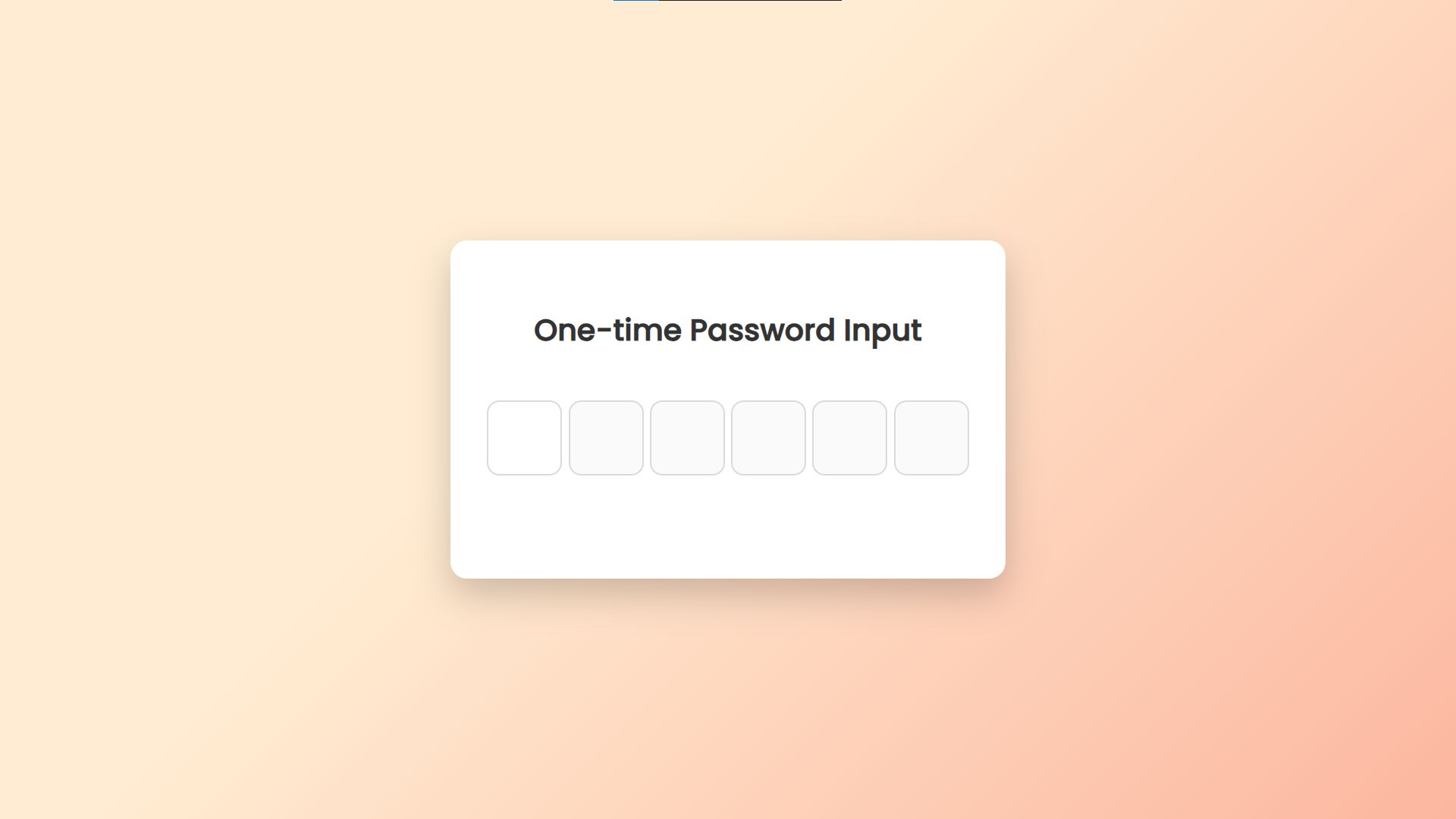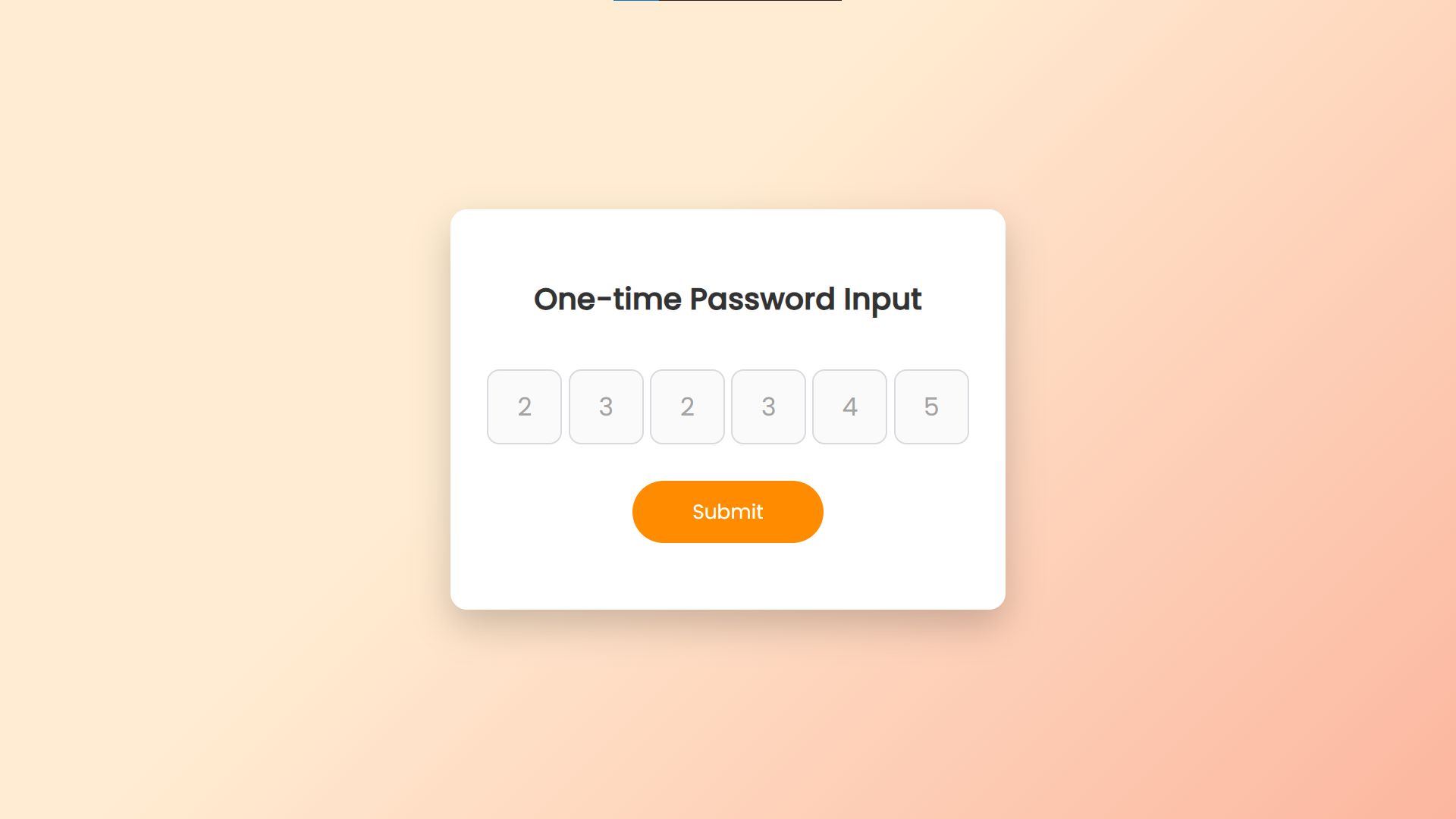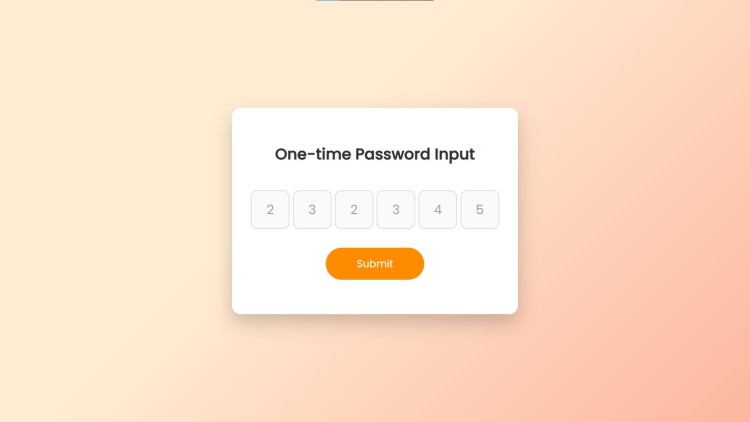One-time Password Input Using HTML, CSS and JavaScript with Source Code
Welcome to the One-time Password Input project, a sleek and interactive form designed using HTML, CSS, and JavaScript. This application simplifies the process of entering a six-digit OTP (One-time Password), commonly used for secure authentication and verification systems. The input fields are intuitively structured to provide a seamless user experience, automatically focusing on the next box as the user types. With its modern design and user-centric functionality, the app offers a responsive layout that works smoothly across devices, ensuring an optimized experience whether on a desktop or mobile.
The project includes real-time input validation, allowing only numerical digits while also handling easy navigation for backspace corrections. Once all six digits are entered, the Submit button appears, ready for OTP submission. The form's design is visually clean and simple, complemented by smooth animations and transitions for a more engaging interaction. Whether you're building a login system or adding secure verification to your web application, this project demonstrates an effective and elegant solution for handling OTP input.
You may also check this simple HTML, CSS and JavaScript project:
- Breakout Game
- Arabic to Roman Converter
- Email Username Generator Tool
- Automatic Input Suggestions
- Auto Resize Textarea
Features:
- Interactive Design: The input boxes focus automatically one after another as the user enters each digit.
- Input Validation: Ensures only numerical input is accepted for each field.
- Seamless Navigation: Users can delete their inputs using the backspace key and easily re-enter values.
- Real-time Feedback: A submit button only appears once all six digits are entered.
- Responsive Layout: The form adapts well to different screen sizes, providing an optimal user experience on both desktop and mobile devices.
Technologies Used:
- HTML: For creating the structure of the OTP input fields.
- CSS: For styling the form, including layout, typography, and input focus effects to enhance user interactivity.
- JavaScript: To manage input validation, focus control, and handling the OTP submission logic.
How to Use:
- Open the application in a browser.
- Enter the 6-digit OTP into the input fields. As you type, the cursor automatically moves to the next input.
- If you make a mistake, use the backspace key to navigate back and correct the input.
- Once all 6 digits are entered, the Submit button will appear.
- Click the Submit button to validate the OTP. The entered OTP is shown in an alert message, simulating a successful submission.
Sample Screenshots of the Project:
Landing Page

Sample OTP Input

How to Run?
- Download the provided source code zip file.
- Extract the downloaded zip file.
- Open the html file and you are now ready to go!
Video Demonstration for Installation/Setup:
Conclusion:
Note: Due to the size or complexity of this submission, the author has submitted it as a .zip file to shorten your download time. After downloading it, you will need a program like Winzip to decompress it.
Virus note: All files are scanned once-a-day by SourceCodester.com for viruses, but new viruses come out every day, so no prevention program can catch 100% of them.
FOR YOUR OWN SAFETY, PLEASE:
1. Re-scan downloaded files using your personal virus checker before using it.
2. NEVER, EVER run compiled files (.exe's, .ocx's, .dll's etc.)--only run source code.
Add new comment
- 402 views

